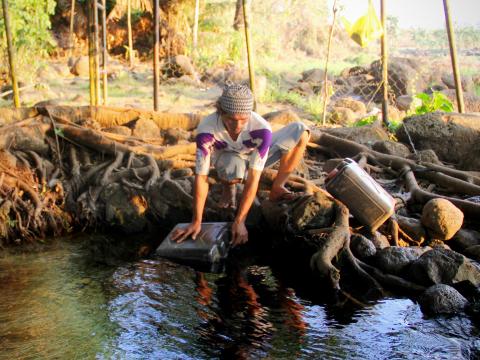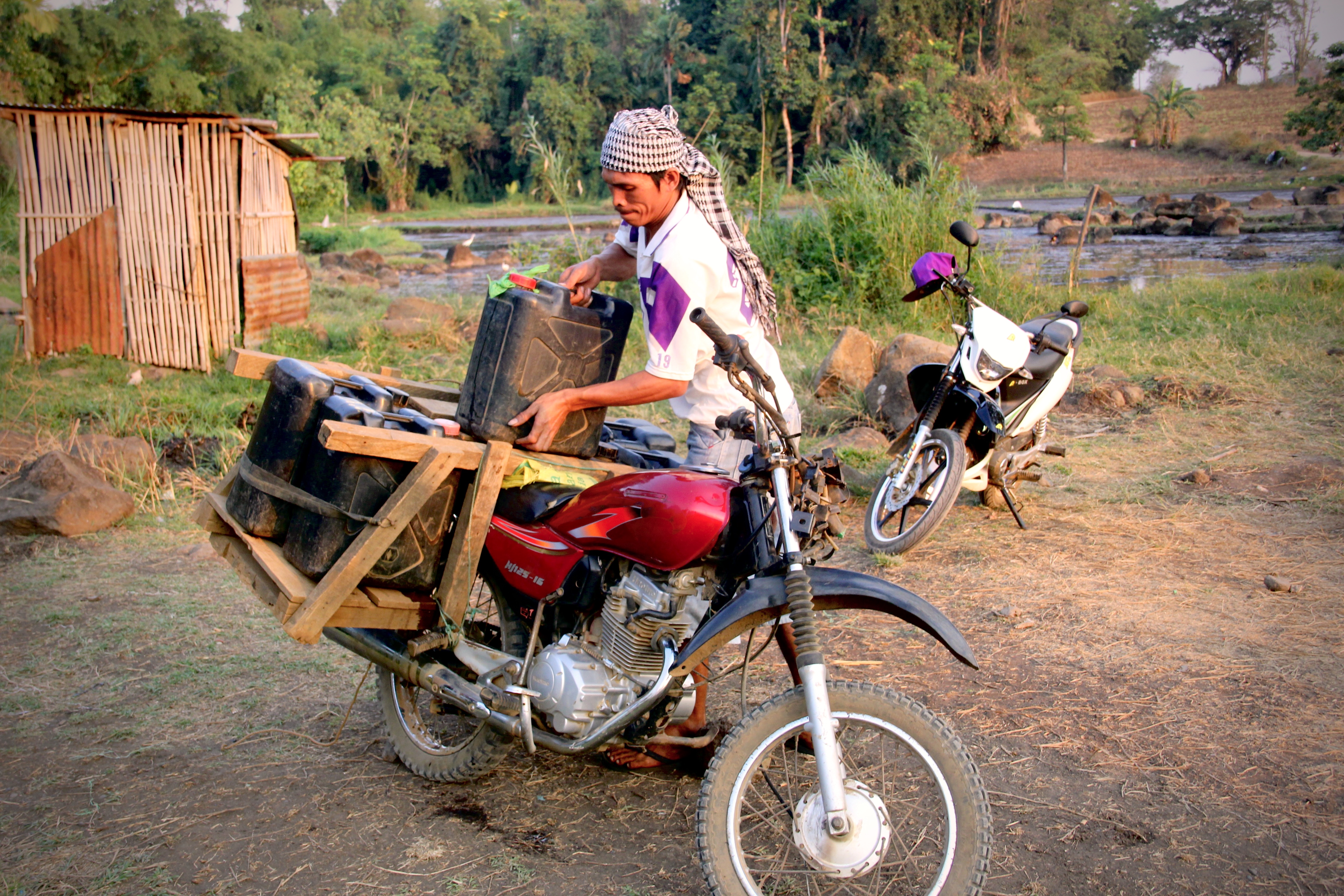Water as precious as gold

The sun is about to settle down, so Reynante Lago, 22, immediately parked his motorcycle in a vacant space parallel to the vast sugarcane plantation in Quezon, one of the towns in Bukidnon.
He quickly grabbed 5 empty water containers, passing through stony riverbeds with women washing clothes and kids enjoying an afternoon swim.
"The risk of getting dirty or contaminated water is very high."
It took Lago 10 minutes to reach the spring at the end of a steep and rocky path beaten by the steps of many others over the years.
He met other women, old people, and children – all carrying containers to collect water.
In front of a tree in Barangay Butong, there’s a strict warning: “Bawal maglabay sa plastic, cellophane, lata, ug uban pa. Multa: P1000" (No throwing of garbage, plastic bags, tin cans, and the like. You will face fines of P1000 (about $20 USD).)
The water comes out from the spring underneath an old balete tree.
“The risk of getting dirty or contaminated water is very high, that’s why it’s everybody’s responsibility to take care of this source for us to survive,” according to Lago.
Precious water
For many generations in Butong, residents had to make do with only two sources of water through the spring. They never had water faucets at home. They ration few precious buckets of water for bathing, cooking, and washing.
Sometimes, residents buy water from neighbouring towns that costs P10 to P20 (about 20 to 40 cents USD) per container.
“In our place, water is as precious as gold,” said Lago.
Every day, Lago makes two trips to fetch water, sometimes carrying almost 100 liters of water at a time. Renting a motorbike is expensive, about P50 (about $1 USD), according to Lago.
“It was difficult and (involved a tough climb in the heat of the sun),” Lago said, noting that the "people here are getting used to it already. It’s like a normal routine.”
When he saved enough money two months ago, he rented a motorbike so that fetching water would become easier.
El Niño
Quezon is a first class municipality in Bukidnon province. Although Pulangi River, the longest body of water in Bukidnon, is relatively close, those villages with difficult terrains like Butong do not have access to water.
“We made attempts (to put water systems in place) in the past months, but because of El Niño, we’re still unsuccessful,” said Nehru Tan, Butong barangay councilor.
About 13,000 residents in Butong are affected by the drought. Based on a report of the Philippines Department of Social Welfare’s Bukidnon is one of the provinces in the Philippines that suffer from clean water scarcity.
"It’s costly to invest water in our area. Yet we’ve learned that the cost of not ensuring access to drinking water and sanitation is even higher in terms of public health and lost work and school days among our children," said Tan. “We will continue our efforts, but we need more resources including people’s full participation to realize our goal."
The rural health unit in the barangay doesn’t even have enough supply of water either. In a week, about two to three pregnant women give birth at the health clinic.
"Luckily, nobody showed up today, or else we will be in trouble," added Tan.
Community-led water supply system
World Vision has just begun its partnership with the local government and communities in Quezon to solve issues like water scarcity, child labour, and poverty.
“Community-led approaches to water supply and sanitation can bring long-lasting benefits to remote villages like Butong,” said Veronica Macabudbod, World Vision program officer.
"Community-led approaches to water supply and sanitation can bring long-lasting benefits to remote villages like Butong."
World Vision is training local communities in managing ongoing efforts to provide easy access to clean water.
The 2014 Millennium Development Goals (MDGs) progress report showed that at least 15.7 million Filipinos still lack access to drinking water.
Also published in Rappler
